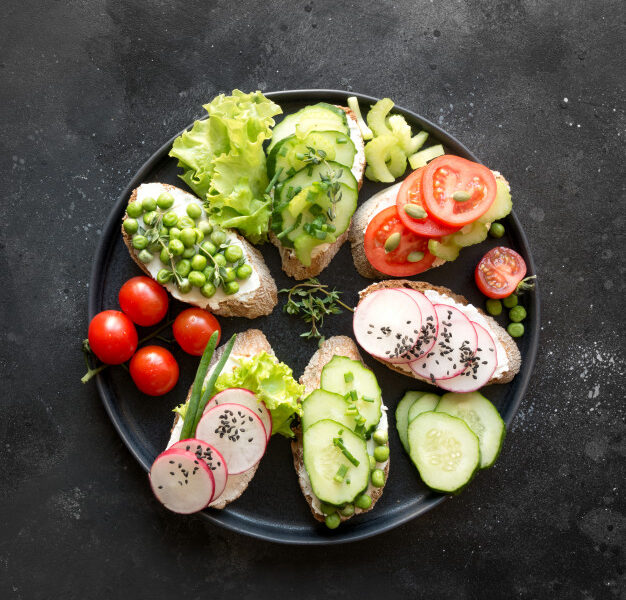We all know that us humans need to ingest and digest food to produce energy on a constant basis in order to make our bodies function.
But do we pay enough attention to what and how much we eat so that our bodies function in the best possible way?
Our bodies need food as energy (calories) but also to provide building blocks for the other more complex processes in our body (protein, minerals etc).
The calorie requirement is usually the easier of the two to meet because our modern lifestyle tends to promote the eating of high calorie foodstuffs (sugars and starches.
The nutritional component is where the natural resistance typically kicks in (fresh fruit and vegetables).
So our basic aim to a healthier lifestyle would be to choose the foods that meet the two basic criteria of providing energy and nutrition. Check this for tips on achieving that healthy lifestyle.
Now making healthy eating choices does not have to be considered as a huge sacrifice to make. With some self motivation one can slowly direct your lifestyle to favor the healthy over the less healthy choices most of the time.
How to Choose Your Healthy Diet
The fact that you read this post means that you might be interested in changing your current eating habits, or simply confirming that you are on the right track.
The best starting point is always to consider where you are and then imagine where you want to be in terms of your overall state of health.
Do you want to loose weight? gain weight? improve your general state of health and energy levels?
The next step is to objectively analyze your current eating habits. Write down what you typically eat for each meal from breakfast time to sleeping time, including all snacks, drinks and in-between meals.
You may even want to drive the point home by packing out your daily (or weekly) food supply on the kitchen table and giving each food item on the table a critical analysis. For packaged or tinned food, read the labels and make a list of the ingredients, paying special attention to the added chemicals like artificial flavorants, colorants and preservatives.
Now we will go ahead and prepare the outline for our healthy eating plan by regulating the quantities and by starting to replace the less healthy choices with its more healthy counterparts.
Balance our Calorie Intake
In order to control our body weight, we need to control our calorie intake. This is a basic law of physics. Energy cannot be created or destroyed, only transformed from one state to another.
This means that if you take in more energy (in the form of food) than what you expend (in the form of bodily activity) the remainder of the energy with be stored in the body in the form of fat.
So if you are on your ideal body weight, your calorie intake should match your calorie expenditure in order to stay on your ideal body weight. If you have excess body fat, the only way to reduce that is to spend more energy than what you take in as food.
This is a huge field of study and there are tons of information, methods and tools available on the topic. We shall address this from all different angles in other targeted publications.
Foods to Reduce
As a general observation, most western cultures and specifically the North American culture, consume too much sodium (salt), sugar, fat and refined grain products. So when you analyze your current eating habits identify the following culprits and find ways to reduce them in your daily diet:
- Reduce daily sodium intake to less than 2000 milligrams (mg) .
- Choose foods so that less than 10 percent of your calories from saturated fatty acids by replacing them with monounsaturated and polyunsaturated fatty acids. (like virgin olive oils)
- Consume less than 300 mg per day of dietary cholesterol. (fatty meat, etc)
- Keep trans fatty acid consumption as low as possible by limiting foods that contain synthetic sources of trans fats, such as partially hydrogenated oils (margarine), and by limiting other solid fats. (look out for the” trans” on the food packaging)
- Reduce the intake of calories from solid fats and added sugars.(candy, etc)
- Limit your intake of foods that contain refined grains, especially refined grain foods that contain solid fats, added sugars, and sodium. (like cakes, white bread)
- If you do choose to drink alcohol, it should be consumed in moderation—up to one drink per day for women and two drinks per day for men—and only by adults over 18 years.
Foods to Increase
After identifying the culprits on your current list of daily foods, start replacing them with the choices listed below:
- Increase the amount of vegetables and fruit you eat per day.
- Eat a variety of vegetables, especially dark-green and red and orange vegetables and beans and peas.
- Choose at least half of all grains that you eat as whole grains. You should always try to replace refined grains (fine white flour) with whole grains.
- Increase your intake of fat-free or low-fat milk and milk products, such as milk, yogurt, cheese, or fortified soy beverages.
- Choose a variety of protein foods, which include seafood, lean meat and poultry, eggs, beans and peas, soy products, and unsalted nuts and seeds.
- Increase the amount and variety of seafood consumed by choosing seafood in place of some meat and poultry.
- Replace protein foods that are higher in solid fats with choices that are lower in solid fats and calories and/or are sources of oils.
- Use oils to replace solid fats where possible. (olive oil over butter)
- Choose foods that give you more potassium, dietary fiber, calcium, and vitamin D, which are nutrients of concern in Western diets. These type of foods include vegetables, fruits, whole grains, and milk and milk products
At this stage of the exercise you are armed with your list of foods that you currently eat per day as well as the items on that list to be reduced or replaced. You also have a list of foods that you should add to your list of daily foods.
The next step is to gradually introduce the changes into your daily diet. Say the first week or two you only focus on eating a correct breakfast. Then moving on to lunch and supper.
The aim is always to get maximum buy-in from yourself. Changes that are too radical risk being too difficult and then given up.
Remember we are trying to create a new lifestyle for you. A lifestyle that will result in you reaching and maintaining your ideal body weight as well as your enjoyment of a perfect health and high energy levels, every day of the rest of your life.




